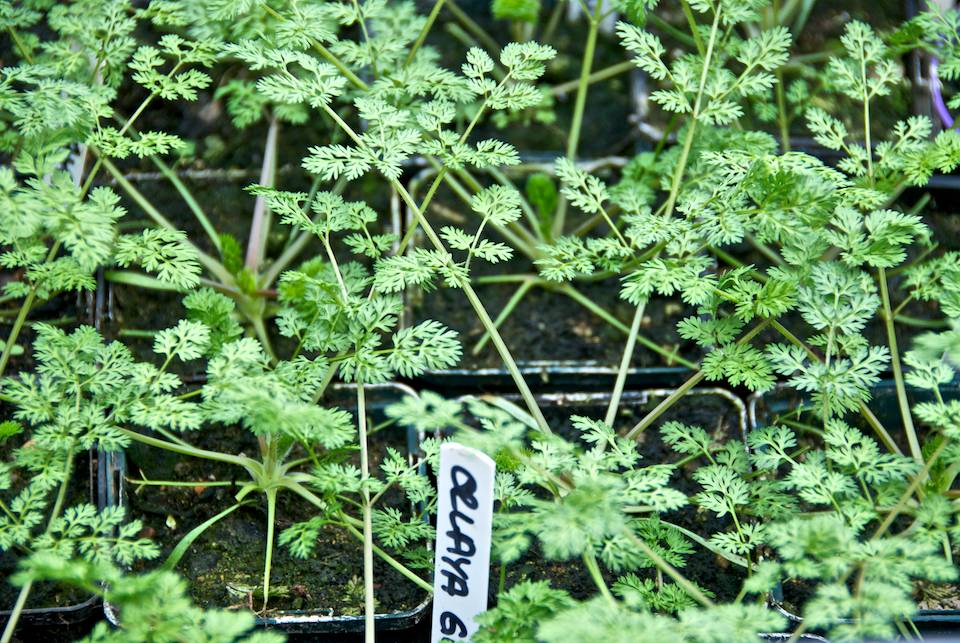Renowned, award winning garden designer & plantsman, Roger Platts, explains that the real secret to growing award winning RHS Chelsea Flower Show plants, is the collaborative relationship between nurseryman and designer. In this, the fifth article in the RHS Chelsea 2012 series, Platts shares his experience in growing show garden plants for Jo Thompson, and The Caravan Club’s, ‘A Celebration of Caravanning’ RHS Chelsea Flower Show garden.
Team Thompson is impressive to say the least, including not only the talented designer herself, but also (a.o.) the nimble David Dodd of the Outdoor Room, textile artist (and maker of scrummy cakes) Carmel Meade, and one of the most respected plantsmen in the country; Roger Platts. Platts, a Steve Redgrave of the horticultural industry, has won a staggering four RHS Chelsea gold medals1, two silver-gilts, 2002 Best in Show and 2010 People’s Choice Awards2. Alongside his impressive array of accolades, Platts is also an RHS committee member, RHS show garden judge, and runs his successful garden design and nursery business, based in Kent. And, if that wasn’t enough, he’s also truly charming.
Double-O-Chelsea
Speaking to the knowledgeable Platts, it is clear that growing plants for Chelsea, involves no clandestine fridges or heaters. Rather ye oldie, hard graft, experience and working with, and around the weather. ‘It’s completely the weather. Completely. Always the weather’, laughs Platts.
Cold and/or warm storage techniques are used for Chelsea, though more for the plant displays in the Great Pavilion, than show gardens. These techniques require substantial experience and are not without risk. ‘If you try to hold back wisteria for example, I know of cases where once they took the plants out of the cold store, all the buds dropped off’. Platts advised against much manipulation, a sentiment echoed by fellow RHS Chelsea designer, Chris Beardshaw in a recent Gardeners Question Time programme, where he advised for the selecting plants ‘that want to be in flower around that time, or at least a month either side’.
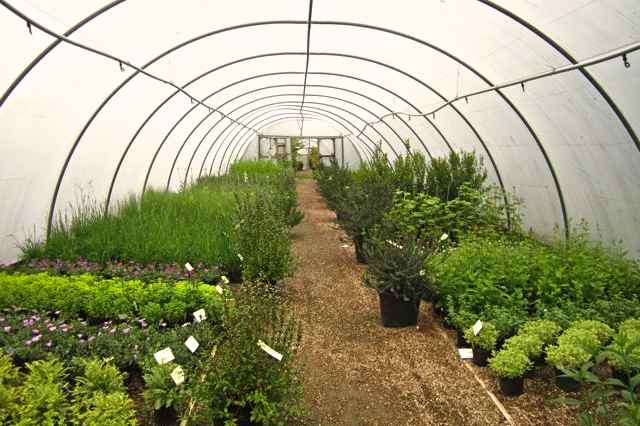
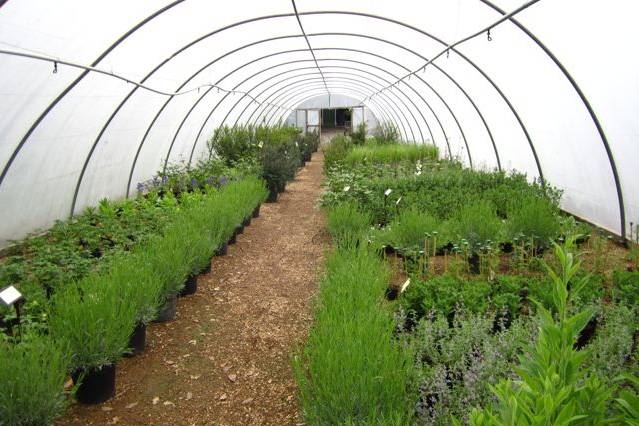
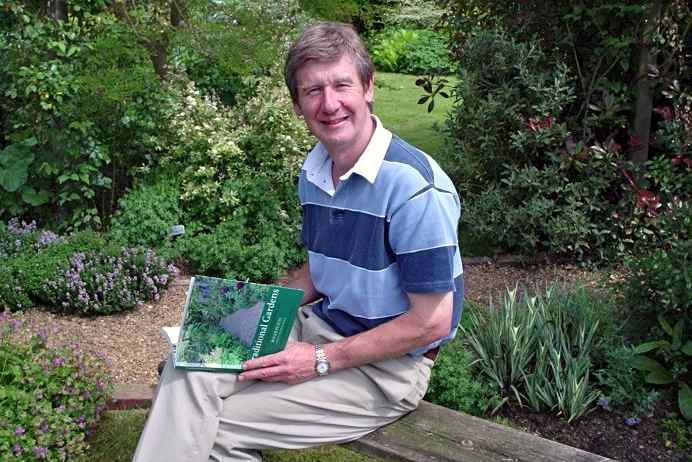
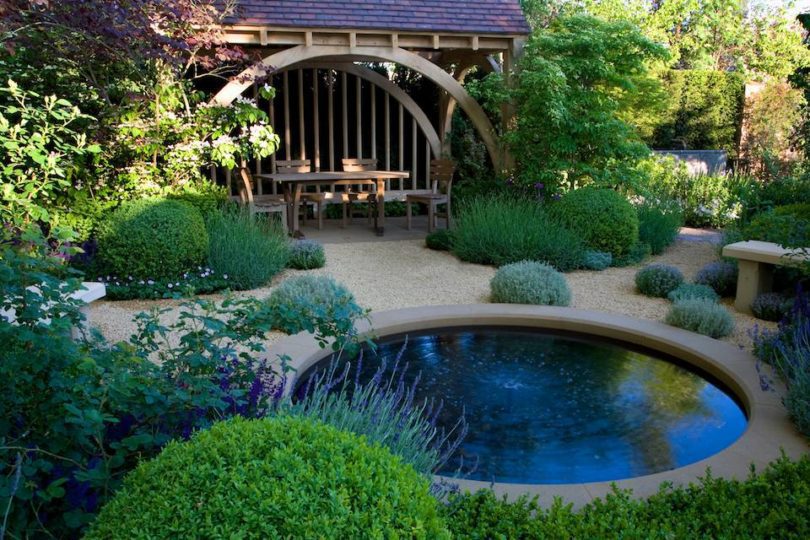

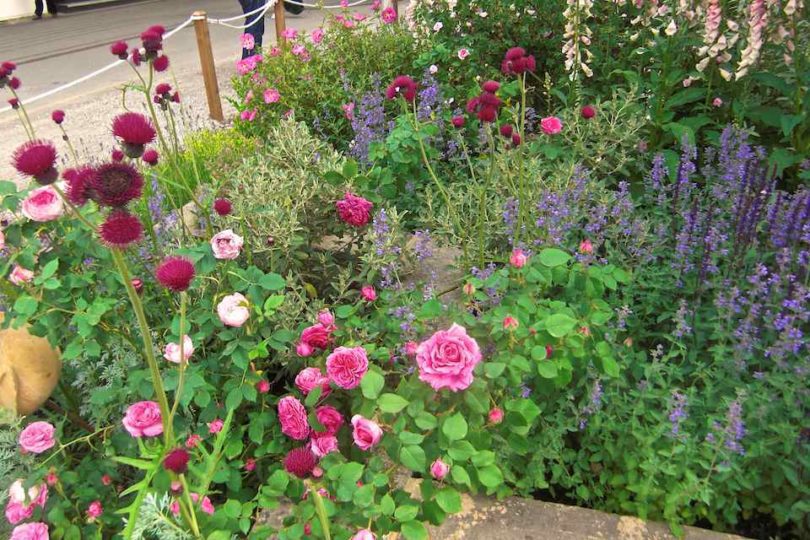


Platts acknowledged there is some minor manipulation of plants, where they are moved around polytunnels to take advantage of temperature variations. However, apart from that, nature has to be allowed to take its course. ‘The plant list has to be fluid’, explained Platts, ‘It’s give and take. The way the weather is going3, there will be some that certainly will be over, whilst others may need more time’.
Contingencies for contingencies
‘Grow more than you need’, says Platts. ‘If the designer needs 50, you have to have 70 or 80’. Platts grows contingencies for his own contingencies. On presentation of Thompson’s plant list, Platts provides immediate feedback as to which plants will be plain sailing, which could be a real problem and consequently ‘run down all the ones in the middle’. Platts manages expectations by being as direct as possible regarding potentially doubtful plants, which according to the plantsman is the only true recipe to starting a good working relationship for the show.
‘Just as you do in a real garden, when looking for possible alternatives, I think it’s important to establish, why you want particular plants. If, for some reason on the day, something doesn’t work out, I will be able to offer alternatives’, explains Platts. Through understanding Thompson’s show garden vision, the plantsman is able to assess plant contingency requirements, not just in terms of genus but also varieties. ‘You can’t do it any other way, or else she’d need to commit to an awful lot of plants’, explains Platts.
For each plant on Thompson’s (soft) planting list, Platts does not only have the respective quantities growing (and/or sourced), but also has two or three alternatives in place, in suitable quantities, to ensure Thompson has the choice. ‘Growing these plants for Jo this year is really nice, a diversion from normal routine, but I don’t do this for the money. Unless you’re a mail order company and get publicity for your plants online, growing show garden plants, is not a lucrative business’, admits Platts.
As a true sign of Platts’ dedication to Thompson, he quite rightly refused my cheeky requests to share any details as to which plants on her plant list, that worried (or not) him. ‘I wouldn’t say’, said Platts sternly, ‘Jo is the first, and only person, to know’. Good man.
Duracell Plants
Granted, he has won enough bling to rival P.Diddy, but for Platts, there is more to RHS Chelsea than medals. For Platts, all show visitors; whether they come early or end of the week, should see the garden as intended. ‘A Chelsea plant is a good quality, well grown plant, that lasts beyond judging’, asserts Platts. Consequently, selecting plants for his own show gardens, or this year for Thompson, Platts looks for those that have staying power. ‘In 2010, for the M&G garden, just before the final deadline to replace a huge Ceanothus. It was in full flower, and looked simply fantastic, and would have done so for judging day. Though, I felt that another hot day and it might not look so fantastic the following day(s), so I replaced it and thank goodness I did’, reminisced Platts.
Judges can only judge what they see on the day. On planting, designers therefore have a difficult choice, to select plants that are either at their peak for judging day, or select those in bud that may (or may not) come into their peak, later that week. Though as Platts observed ‘I love to see plants, especially roses, in bud, when they’re just about to flower’. Note, this is a tip not just from a super plantsman, but also from Platts; 2012 RHS Chelsea judge…
Show garden durability isn’t Platts’ only criteria for show garden planting. In the style of John Reith, the BBC’s founding father, Platts declared ‘I have always felt that a show garden should either be fun or entertain, but also be informative. It should be a proper garden and if it’s a garden, then it’s got to be correct in terms of being achievable’. According to Platts, show gardens must include only those plants that are appropriate, and hence able to survive and thrive in that specific space in a regular garden.
Planting for RHS Chelsea
‘I remember at the show working on the M&G garden, on my hands and knees, planting, thinking ‘yes’, this is why I like doing this. That feeling of planting up a show garden, even after eight years of it, is just fantastic’, reminisces Platts.
As the name suggests, show gardens are for show. Planting density is much higher than in a normal garden scenario, and only the best of the best plants, actually make it into the garden. ‘There is quite a lot of last minute alteration in the planting’, explains Platts, where weather conditions will affect plant (peak) conditions.
Timing is crucial. ‘It’s not a secret, but for the planting to look good you must get it finished in good time. After a couple days of planting, plants stand up and look so much better’, explains Platts. Plant delivery should therefore be timed accordingly, to ensure arrival in the desired pre-peak condition and limiting possible damage on (building) site.
Interestingly, Platts explained that some designers prefer to plant plants in their pots, whilst others prefer to plant them out. According to Platts, keeping plants in pots makes watering easier, and (if so desired) restricts their growth. ‘Take a hardy Geranium for example, after just two weeks, it will be a completely different looking plant’, says Platts.
Big Brother
According to Platts, the joy of doing a show garden is the feedback from both peers as well as the public, the pinnacle of which was his winning the 2010 People’s Choice award.
There really is nothing quite like Chelsea and one of the many joys is listening to the comments of the (elbowing) fellow visitors. A sentiment shared by the designers. ‘I actually mingle in the crowd and listen’, reveals Platts. ‘To be part of the crowd, and try to look critically at the garden from their point of view, is just wonderful’, explained Platts.
So when you are next at the RHS Chelsea Flower Show, and you’ve managed to push your way forward through the crowd, and despite being tired, completely sun drenched and insanely thirsty, remember that the comfortably cushioned, cold champagne sipping, gently garden shaded designers, would give anything to swap places with you, or they may even be standing right next to you….
- Show Garden category
- Other awards; 1992, 1993 and 2003 RHS Hampton Court Gold Medals and 1994 Silver-Gilt.
- Interview conducted in super sunny April, pre-hosepipe-ban (wet) weather.
